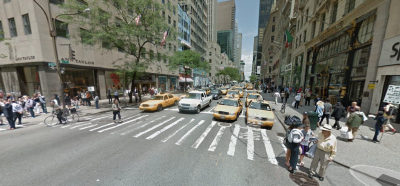Trottenberg: DOT Will Make It Safer to Bike Across the Harlem River

This afternoon, officials from DOT and Citi Bike testified before the City Council transportation committee on the state of bicycling in New York. How will NYC DOT make it safer to bike in the city and design streets where more New Yorkers feel comfortable biking? Today’s hearing featured a glimpse into the bike policy initiatives the de Blasio administration is developing.
Transportation Commissioner Polly Trottenberg announced a new DOT “Bikes on Bridges” program to create safer access to and across the city’s network of bridges. The agency will focus first on the Harlem River crossings, which local residents and Transportation Alternatives have been campaigning to improve for walking and biking. There’s no timeline for implementation, but Trottenberg said that the effort will result in short-term recommendations and guide future long-term capital investments on the bridges.
Trottenberg also restated the city’s commitment to expand the bike network with 50 miles of bike lanes each year, including five miles of protected bike lanes. She noted that more than 340,000 trips are taken by bike each day in NYC, and said the city aims to double bicycling by 2020. That would not exceed the growth rate in recent years, and may actually be a step back from prior goals stated by the administration. In September, Trottenberg had reiterated a campaign pledge by Mayor de Blasio to raise NYC’s bike mode share to 6 percent. According to the most recent Census data, the current bicycle commute mode share in the city is 1.2 percent.
Transportation Committee Chair Ydanis Rodriguez asked if the city could pick up the pace of protected bike lane installation. “If we’re going to take it to the next level, then we’re going to have to talk about additional resources and additional personnel,” Trottenberg said, adding that protected bike lane projects consume a significant amount of time as the city works with local merchants, residents, and community boards.
Here are more highlights from the hearing:
- Bike racks on buses? Maybe, on a few routes: Trottenberg also announced that her agency is working with the MTA to launch a pilot to install bike racks on buses along some routes, particularly those that cross bridges. New York’s transit authority has lagged behind its peers on this issue. Details on the initiative from the MTA were scant and noncommittal. “The MTA is working with the NYC Department of Transportation to explore this idea,” spokesperson Adam Lisberg said.
- An updated in-depth look at serious injuries and fatalities: Eight years ago, the city released a comprehensive, multi-year, inter-agency review of serious injuries and fatalities of bicyclists [PDF]. The report provided good data about the dangers facing NYC cyclists but has grown out-of-date. As biking for transportation becomes more widespread, bike safety is an issue that directly affects a growing population of New Yorkers. This year, the number of bicyclist injuries is slightly outpacing last year’s totals, and fatalities are way up over the year before. Trottenberg said that the city is using new data to refresh the old bike safety report and will release an updated version next year.
- Citi Bike, cash cow? Rodriguez wanted to know when bike-share would start turning a profit that could be split with the city, but neither Berlin nor Trottenberg could say when that might be. “We’ve simplified the profit-sharing agreement,” Trottenberg said. “We’re now going to do a smaller piece of the gross profits, if those should come.” She added that until Alta’s sale, it had not been reimbursing the city for on-street metered parking converted to bike-share stations, as required by its contract. Under the new contract, Alta is paying the city a flat $1 million annual reimbursement for lost parking revenue. Trottenberg said future station sitings will minimize the loss of car parking so as to not diminish the city’s revenue stream and to “minimize inconvenience to motorists.”
The hearing also had its share of requests from council members related to their districts:
- Staten Island Council Member Debi Rose asked general questions about bike safety in her borough and pressed DOT officials about building a bicycle and pedestrian path on the Verrazano Narrows Bridge. Trottenberg said DOT is “exploring” the concept with the MTA, which operates the bridge. One issue that didn’t come up over which DOT has direct control: Improving conditions for cyclists who use the Staten Island Ferry.
- Council Member Jimmy Van Bramer asked for an update on the delayed Pulaski Bridge bike path, and DOT’s Josh Benson confirmed that it will be installed early next year. Fellow western Queens representative Costa Constantinides asked about bike improvements to 21st Street. Benson said safety fixes there would focus mostly on slowing down speeding drivers and improving conditions for pedestrians, while the agency is planning to add barriers along the existing bikeway on parallel Vernon Boulevard.
- Benson said DOT will continue neighborhood-level bike lane planning already underway in Long Island City, Ridgewood, Brownsville, East New York, and Corona next year. Trottenberg added that the de Blasio administration is focused on expanding the city’s bike network beyond the central core of the city.
The police department and the transit authority came up a number of times during today’s hearing, on issues from enforcement to building a path across the Verrazano Narrows Bridge. Neither organization testified today.
This post has been updated. Alta will pay the city $1 million each year to reimburse for paid on-street parking used by bike-share stations, not $5 million as previously reported.
